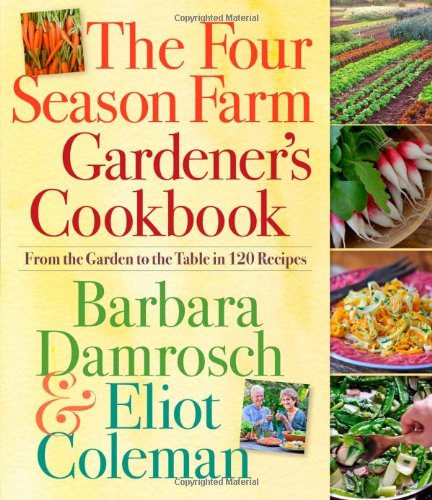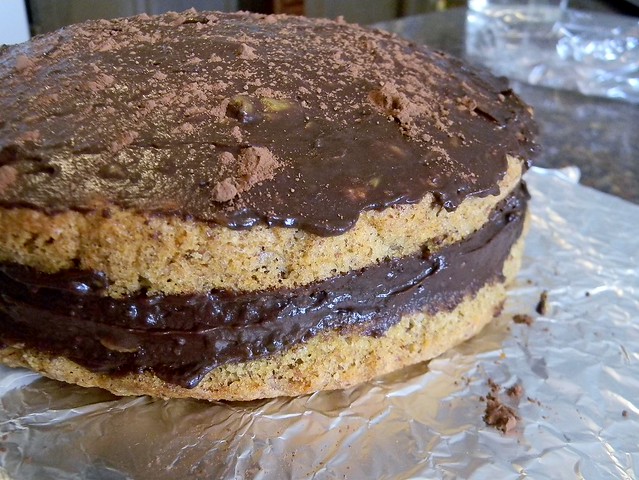Authors: Barbara Damrosch and Eliot Coleman
Publisher: Workman (2013)
 Gardening can be a tricky thing. Between choosing what
and when to plant, what type of soil you have, how much water, sun, fertilizer
and space the seedlings need and how to deal with all those darned weeds, what should be a relaxing pastime can
quickly turn into a neurotic episode. Of course, even if all the variables are
in your favour, your garden harvest may fail horribly... or you may find
yourself with more tomatoes and peppers than you know what to do with! The Four
Season Farm in Harborside, Maine, does though – and authors Barbara Damrosch
and Eliot Coleman are ready to share their knowledge in their book: The Four
Season Farm Gardener's Cookbook.
Gardening can be a tricky thing. Between choosing what
and when to plant, what type of soil you have, how much water, sun, fertilizer
and space the seedlings need and how to deal with all those darned weeds, what should be a relaxing pastime can
quickly turn into a neurotic episode. Of course, even if all the variables are
in your favour, your garden harvest may fail horribly... or you may find
yourself with more tomatoes and peppers than you know what to do with! The Four
Season Farm in Harborside, Maine, does though – and authors Barbara Damrosch
and Eliot Coleman are ready to share their knowledge in their book: The Four
Season Farm Gardener's Cookbook.
Gardener’s Cookbook is actually two books in one –
the first 250 of the almost 500 pages (Part
One) are dedicated to everything related to growing your own food. From the
best layouts for proper growing and easy harvests (p. 33), to gardening in tiny spaces (p. 32), crop rotation (p.
43-52) and even the annual vs. permanent produce varieties, no practical
detail is spared. A bit of soil science is also included in the first chapter,
which for any new gardener (and even some seasoned pros) proves to be a useful
and informative read. Note, however, that since the Four Season Farm is on the
East coast of Maine, the notes that Damrosch and Coleman include are attuned to
that climate (humid continental) and topography (rocky). However, with the
solid knowledge that this book provides on a general scheme, readers will be
able to apply the necessary adaptations for their own zones.
My favourite section of Part One is The Crops (p. 63), as it comprises suggested plans for all types of gardening. From the Salad Garden (p. 64) to the Winter Garden (p. 87) and even a Hard Times Garden (p. 75), whatever your need or desire you can find one (or many) forms of inspiration. The suggestions of produce are not only astoundingly diverse, but are inspirational for even a summertime casual gardener like me. Things I didn’t even realize were accessible to the home gardener (like artichokes and Asian greens) came onto my radar, and now I’m probing their possibilities in my garden next year. Given that the authors have over 40 years of experience in the field of agriculture, readers can rest assured that spending the time to peruse Part One of this book is well worth it!
 |
| Hazelnut Torte (p. 437) |
 |
| Red Thai Curry with Fall Vegetables (p. 404) |
Even if you don’t think you have a green thumb or culinary bone in your
body, it’s never too late to start. As long as you have the desire for fresh,
homegrown food – like perfectly crisp lettuce, still warm tomatoes, or
just-pulled carrots – at your beck and call, some dirt, seeds and a kitchen are
all you need to use The Four Season Farm Gardener's Cookbook.
Available on Amazon
Available on Amazon










